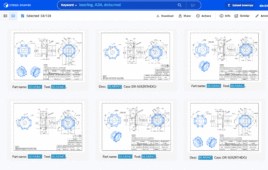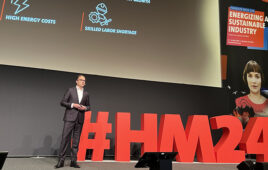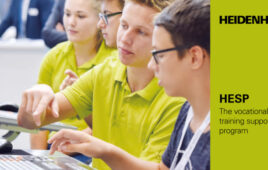
Every human body part is unique, requiring that a range of biomedical parts be custom designed for each person. Thanks to improved CAD/CAM technologies, this has created a growing demand for everything from personalized hearing aids and orthodontics to prosthetics and pre-surgical models.
Every one of these reverse engineered products requires some type of rapid manufacturing to produce it. It’s a beautiful thing that both additive and subtractive rapid manufacturing processes begin with an STL file — the same format that comes from the initial scanning process!
The popular STL format is also the best way to create 3D models of the human body, as it yields complex, organic surfaces. More than any other format, these models are best displayed, manipulated and saved as triangular faceted surfaces. As a result, reverse engineering and rapid manufacturing can work together seamlessly.
The Chamberlain Group, for example, creates anatomically accurate human hearts used by surgeons to practice new procedures. They use a desktop 3D laser scanner to
capture all the detail of a lifelike model, and export it as an STL file. A 3D printer then produces a perfect model for silicone casting.
Reverse engineering and rapid manufacturing also work in concert to dramatically improve the process of making medical prostheses. Rather than spend tedious hours hand sculpting, anaplastologists use a 3D laser scanner and desktop mill to quickly produce prosthetic parts with improved accuracy and realism.
The prosthetic parts are valued for possessing lifelike details, including every wrinkle and pore in the skin. The subtractive rapid manufacturing process
also offers faster production, saving the anaplastologist important clinical energy
for the patient.
While technology is opening up many possibilities for engineers, it’s important to
consider functional testing when creating a part. If a model does not have the same
material properties as the final part, it is worthless for functional testing.
Very few additive rapid manufacturing materials are approved by the FDA, so food processing and biomedical applications are limited. As a result, subtractive rapid manufacturing is often a more effective and lucrative option.
Rather than build a part layer by layer, the subtractive process starts with a homogeneous block of plastic and mills away unwanted material to reveal the
desired part. Subtractive materials include popular engineered plastics such as ABS, Delrin, and nylon – the same materials used in the actual manufactured products. The parts make accurate testing possible for a range of physical tests and meet many FDA and other government regulations.
Subtractive rapid manufacturing produces parts with structural, thermal, and electrical physical properties that are identical to their final production parts. They also have tight dimensional accuracies and smooth surfaces. Fit and assembly models successfully simulate snap fits, fluid-tight seals, and thermal and electrical conductivity between parts.
This kind of accuracy is vital, whether it’s for a prosthetic knee that needs to meet strict medical requirements or slick new cell phone casing. The future is bright and loaded with profitable opportunities. The key to making the most of it is using the right combination of reverse engineering and rapid manufacturing technologies.
::Design World::
Filed Under: Digital manufacturing





Tell Us What You Think!